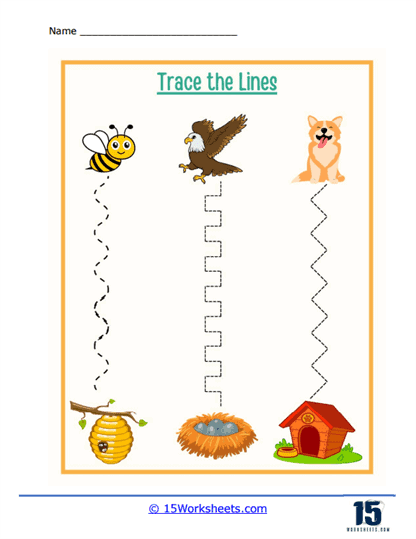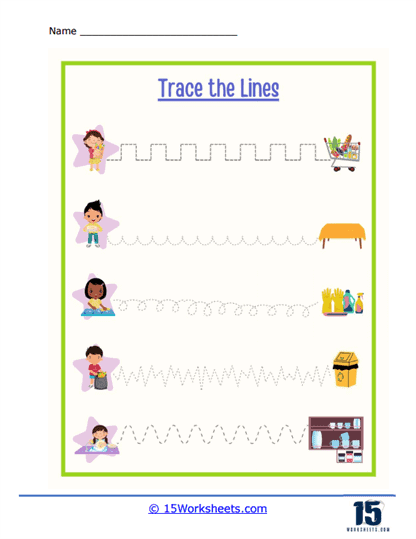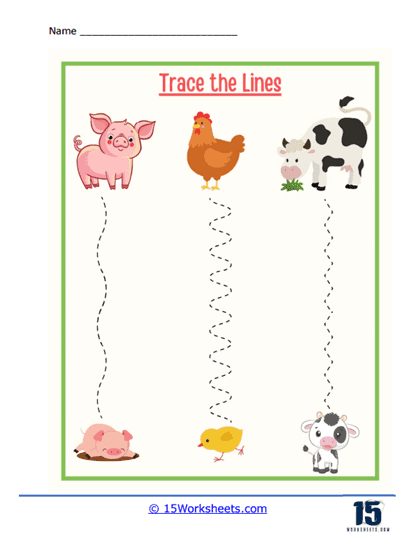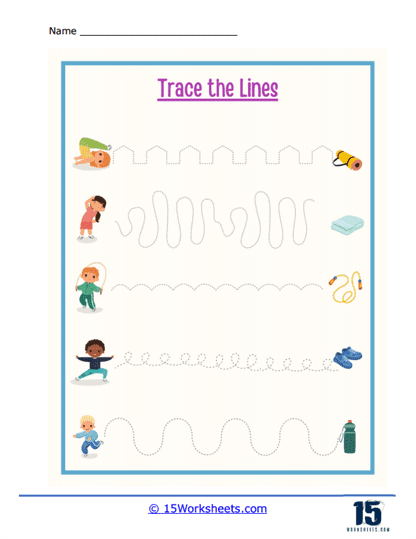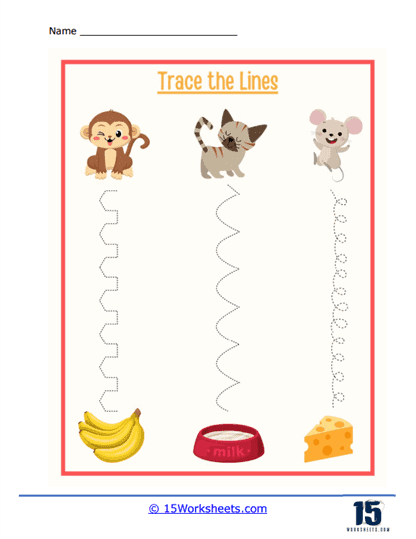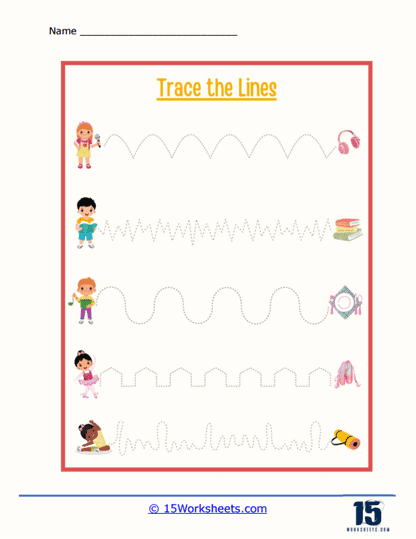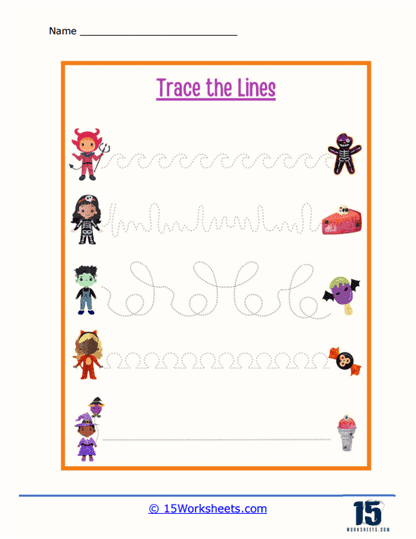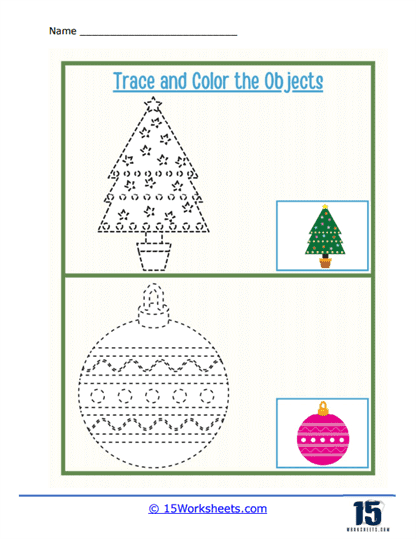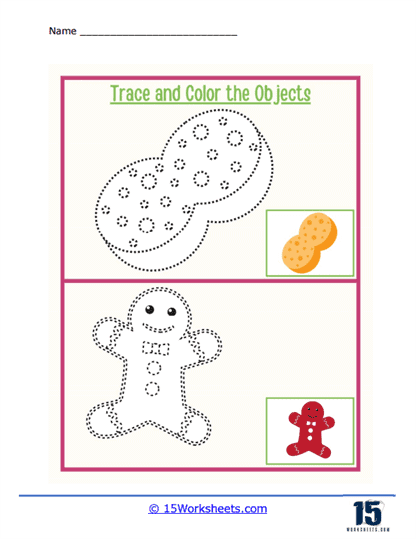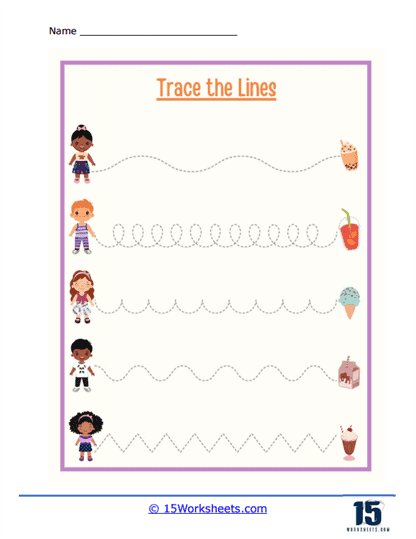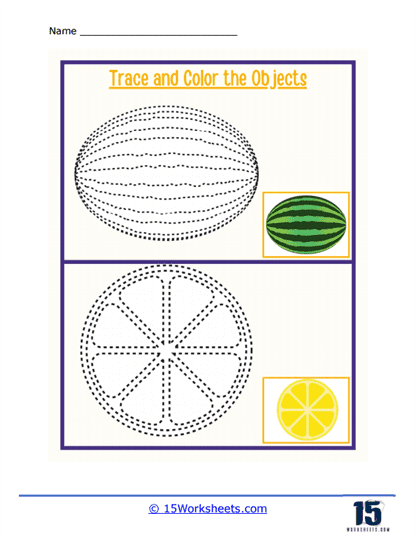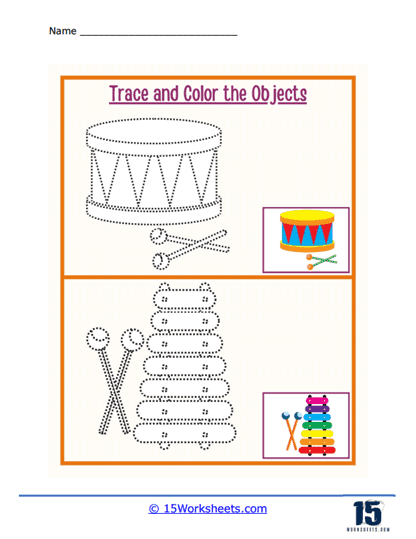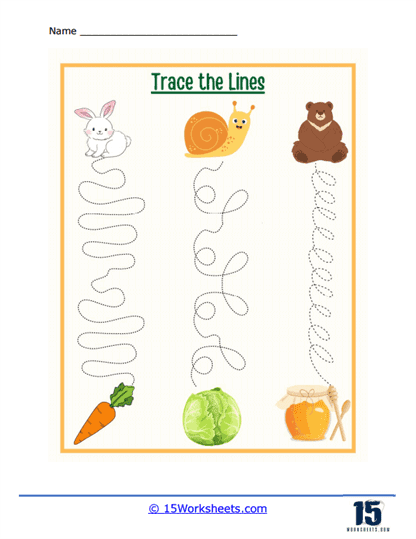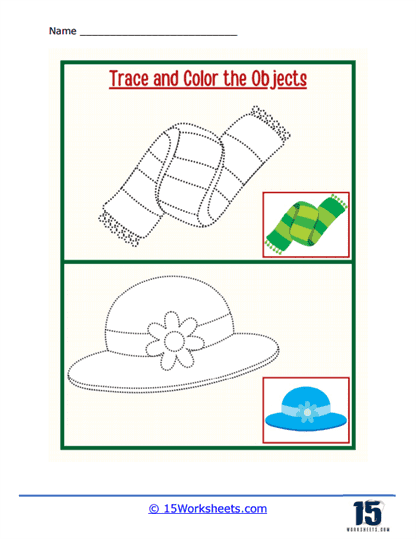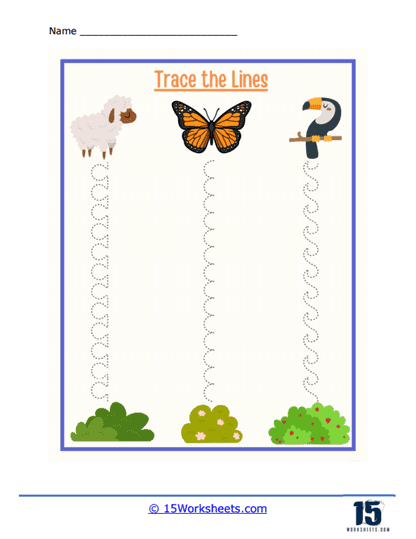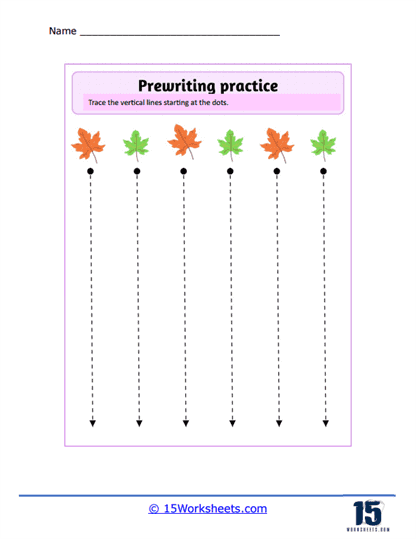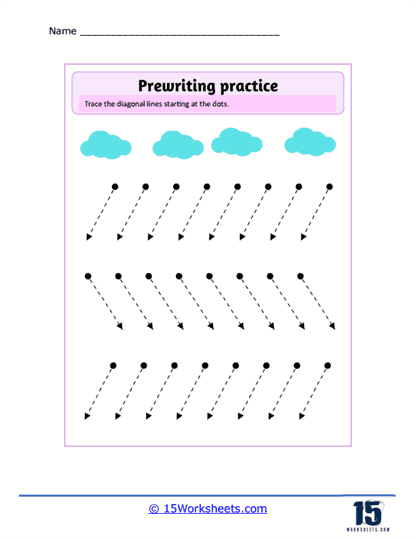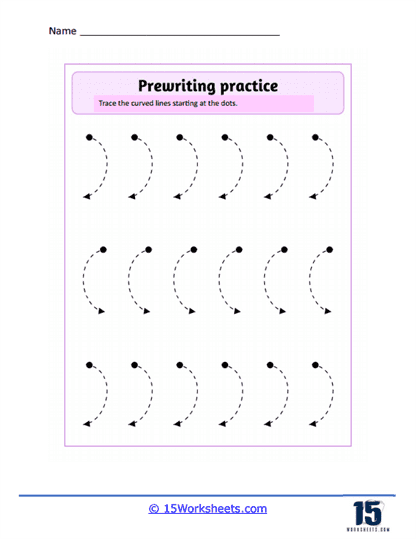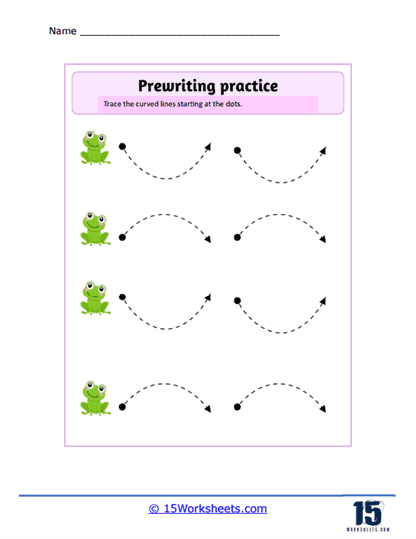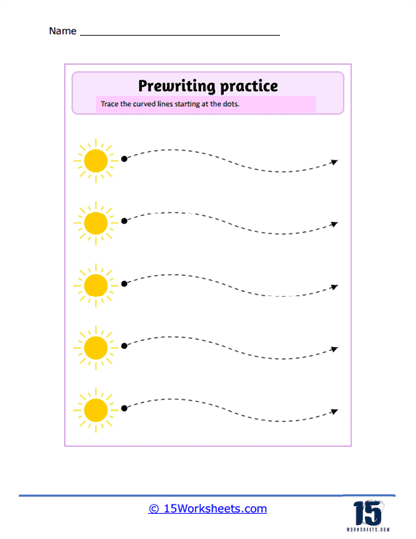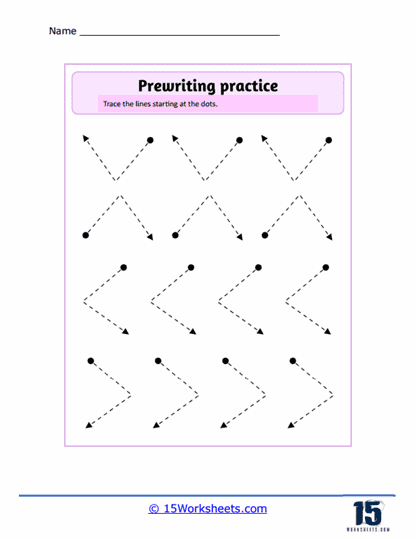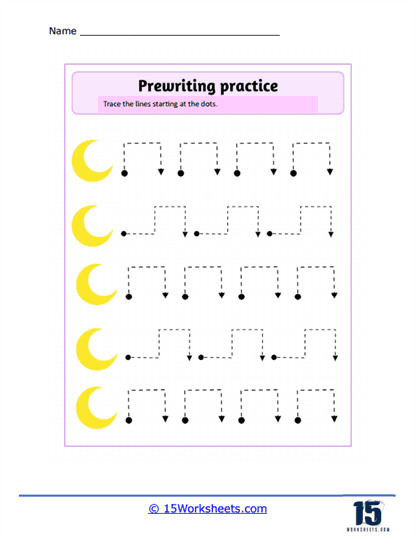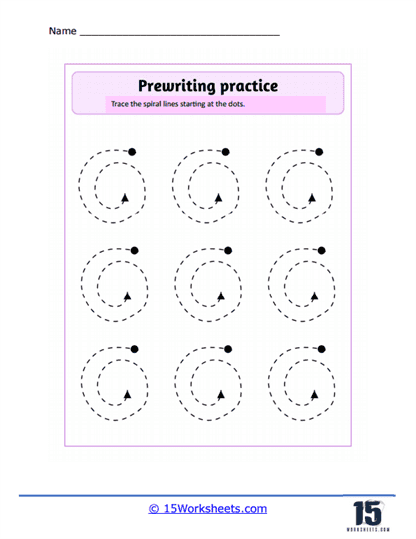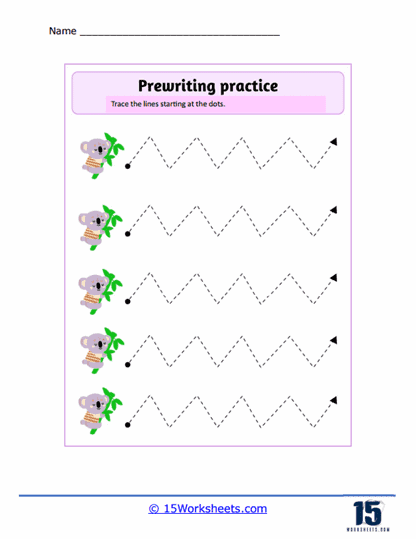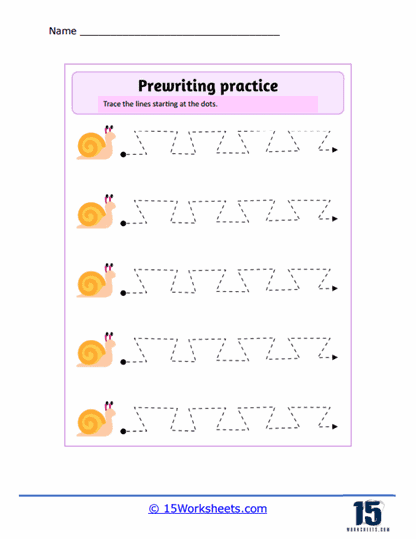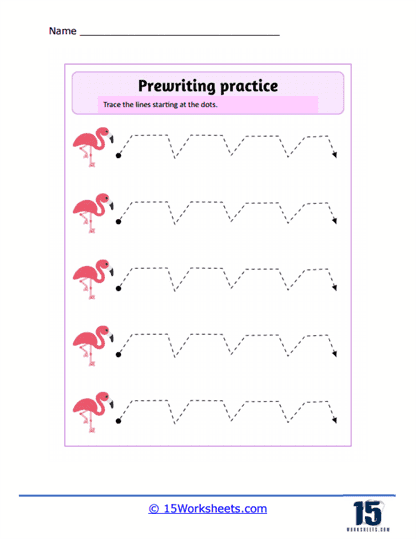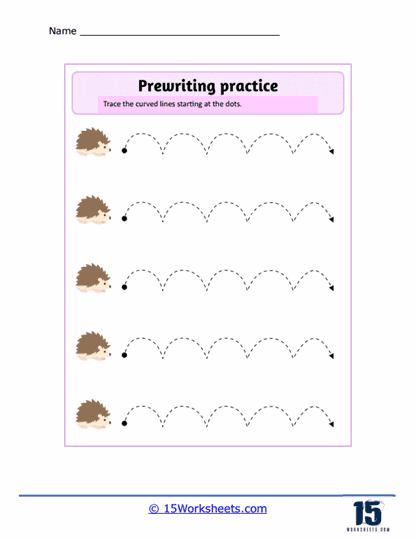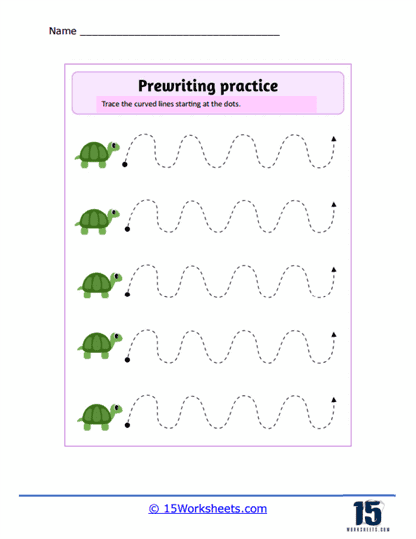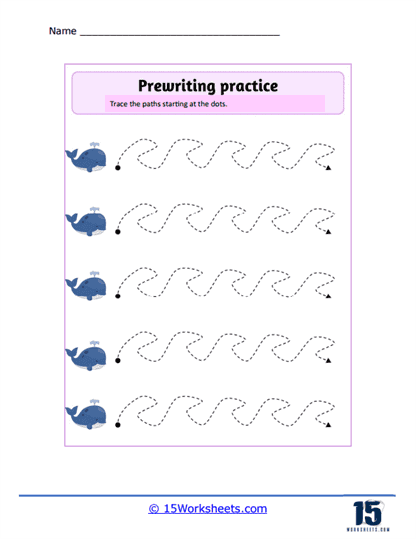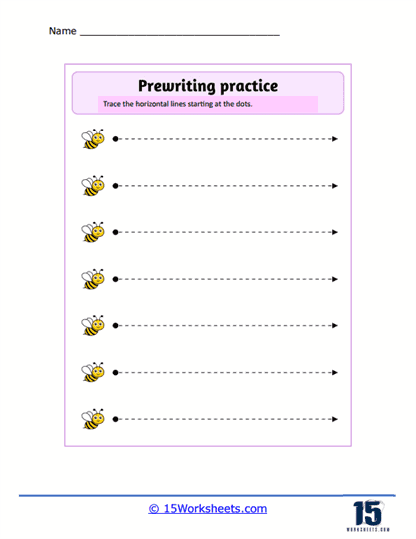Pencil Control Worksheets
About These 15 Worksheets
Pencil Control worksheets are designed to help children develop and practice their fine motor skills, hand-eye coordination, and pencil grip. These worksheets are filled with various exercises and activities that require children to control their pencil movements to create patterns, shapes, or trace lines. Pencil control is essential for developing the foundational skills necessary for writing, drawing, and other activities that involve precise hand movements.
Some common elements of Pencil Control worksheets may include:
Tracing Activities – Worksheets may provide pre-drawn lines, shapes, or patterns for children to trace, helping them practice controlling their pencil movements and improving their handwriting skills.
Dot-to-dot Exercises – Connecting numbered or lettered dots in a sequence requires children to control their pencil movements while reinforcing number and letter recognition.
Mazes and Paths – Worksheets can include simple mazes or paths for children to navigate using their pencil, helping develop their problem-solving skills and hand-eye coordination.
Drawing Shapes and Patterns – Children may be asked to draw specific shapes or patterns, which can help develop their fine motor skills, spatial awareness, and understanding of geometric concepts.
Pre-writing Activities – Worksheets can feature activities that help children develop the skills necessary for writing, such as practicing vertical, horizontal, and diagonal lines, or forming basic letter shapes.
Guided Drawings – Step-by-step drawing instructions can help children practice their pencil control while learning to draw various objects or characters.
Pencil Control worksheets can be used in various settings, such as classrooms, therapy sessions, or at home, and can be adapted to suit different age groups and developmental levels. These worksheets help children develop essential fine motor skills, hand-eye coordination, and pencil grip, which are crucial for success in writing, drawing, and other activities that require precise hand movements.
How to Improve Student Pencil Control
Improving student pencil control is essential for developing fine motor skills, handwriting, and drawing abilities. Here are some strategies and activities that can help students improve their pencil control:
Provide Proper Writing Tools – Ensure students have access to age-appropriate writing tools, such as thicker pencils, triangular pencils, or pencil grips that promote a comfortable and ergonomic grip.
Teach the Correct Pencil Grip – Show students how to hold a pencil using the tripod grip, with the thumb, index, and middle fingers forming a triangle, while the ring and pinky fingers rest against the hand for stability.
Practice Tracing Exercises – Use tracing skills worksheets with lines, curves, shapes, and patterns for students to practice following pre-drawn paths, helping them develop control over their pencil movements.
Engage in Fine Motor Activities – Encourage students to participate in activities that strengthen fine motor skills and hand muscles, such as using playdough, manipulating small objects, stringing beads, or using tweezers.
Gradually Increase Difficulty – Start with simple tracing exercises and gradually introduce more complex shapes, patterns, or images as students become more confident and skilled.
Introduce Dot-to-dot Activities – These activities help students practice pencil control while reinforcing number and letter recognition.
Encourage Drawing and Coloring – Provide opportunities for students to draw and color, as these activities help improve pencil control, hand-eye coordination, and creativity.
Break Down Complex Tasks – Teach students to break down complex writing or drawing tasks into smaller steps, which can help them maintain control and focus on each part of the task.
Provide Consistent Practice – Regular practice is crucial for improving pencil control, so incorporate pencil control activities into the daily or weekly routine.
Offer Positive Reinforcement and Feedback – Praise students for their efforts and progress, and provide constructive feedback to help them continue improving their pencil control skills.
By implementing these strategies and activities, teachers and parents can help students develop the fine motor skills, hand-eye coordination, and pencil control necessary for success in writing, drawing, and other activities that require precise hand movements.

